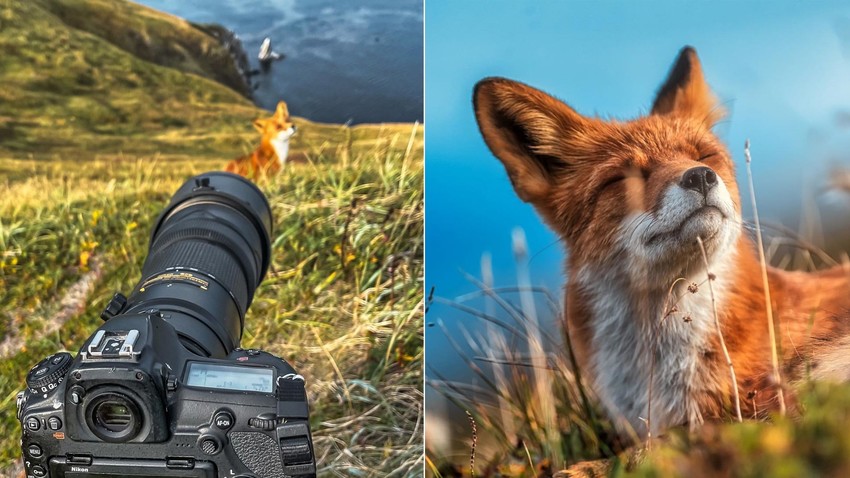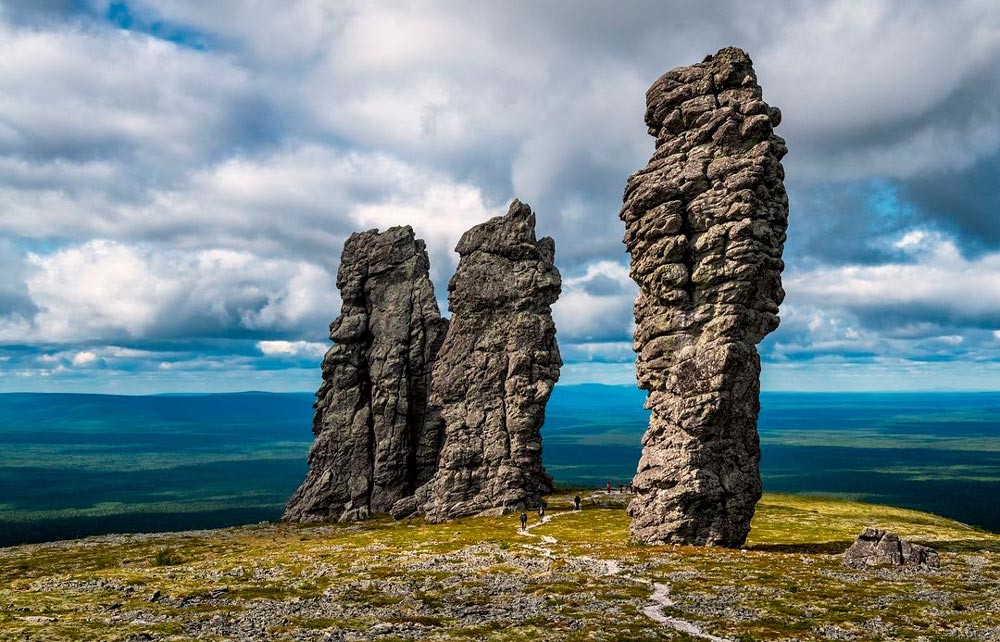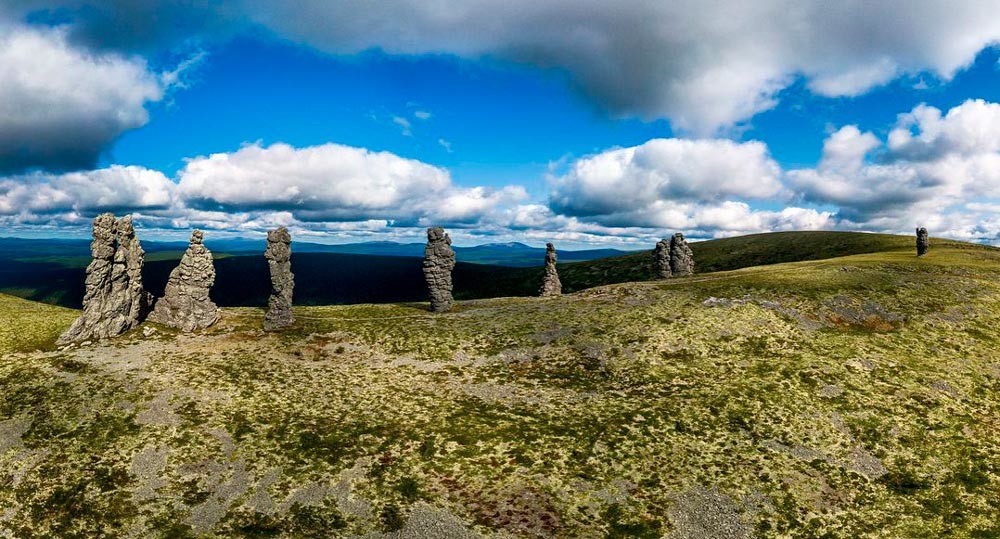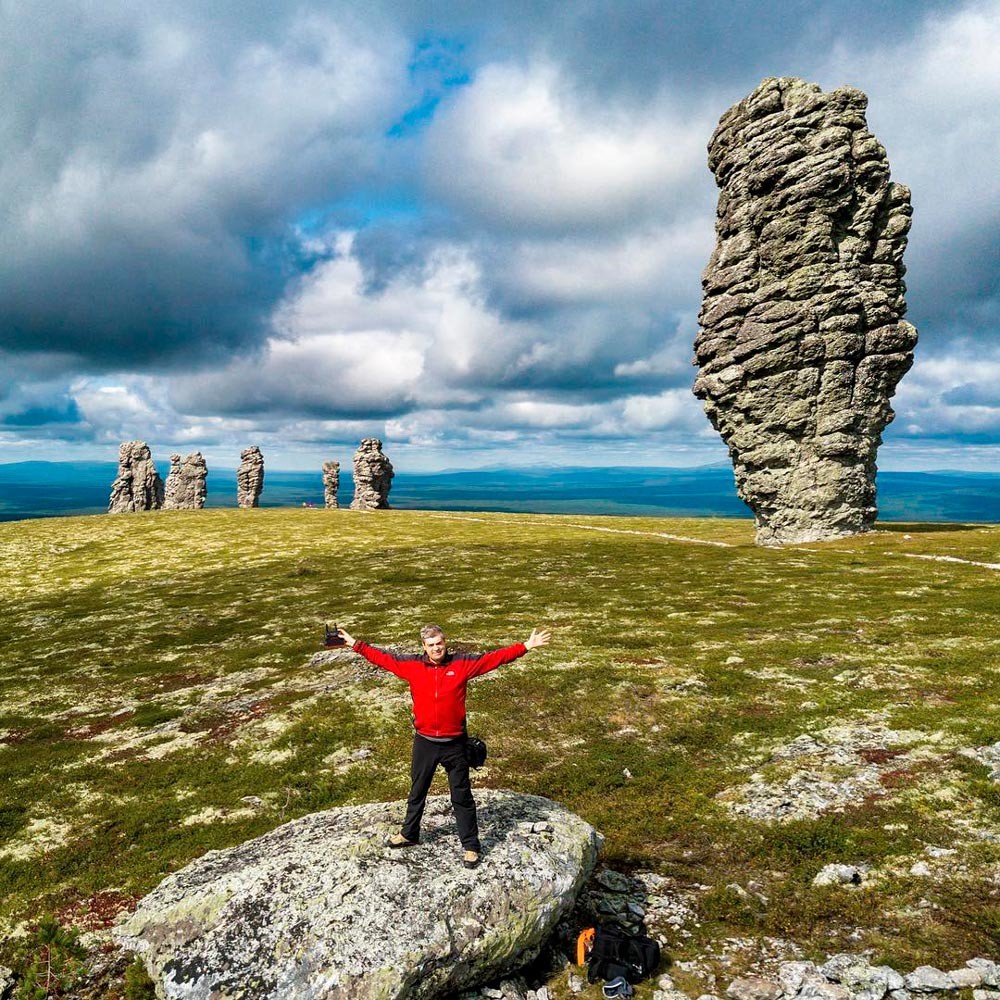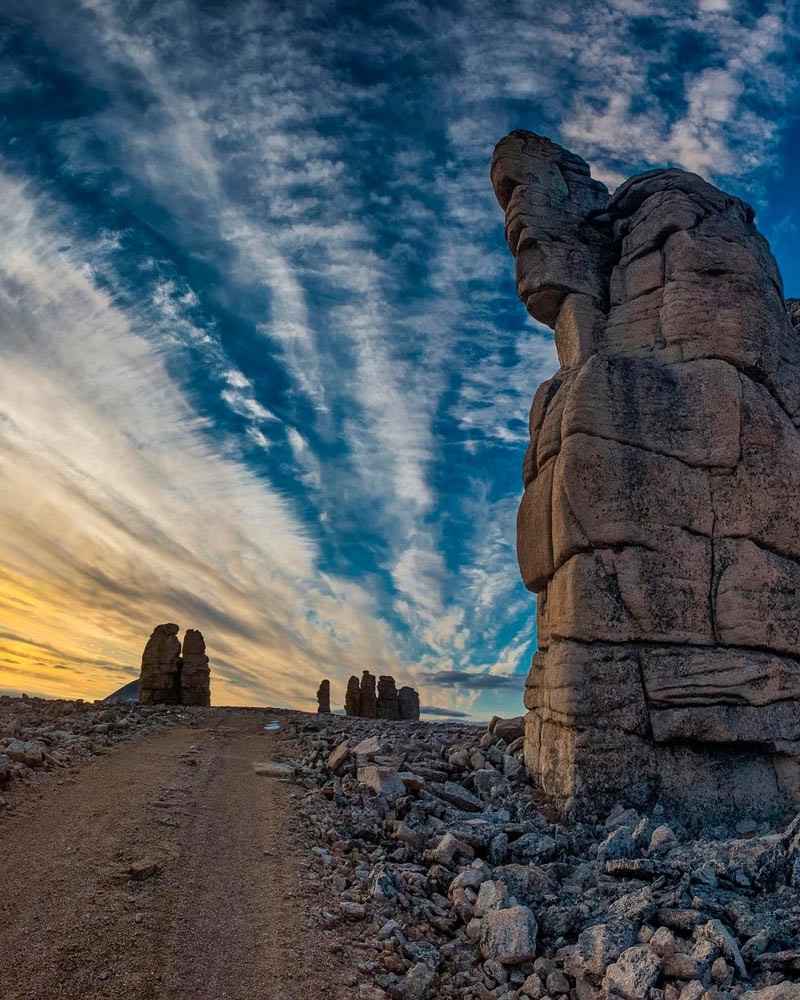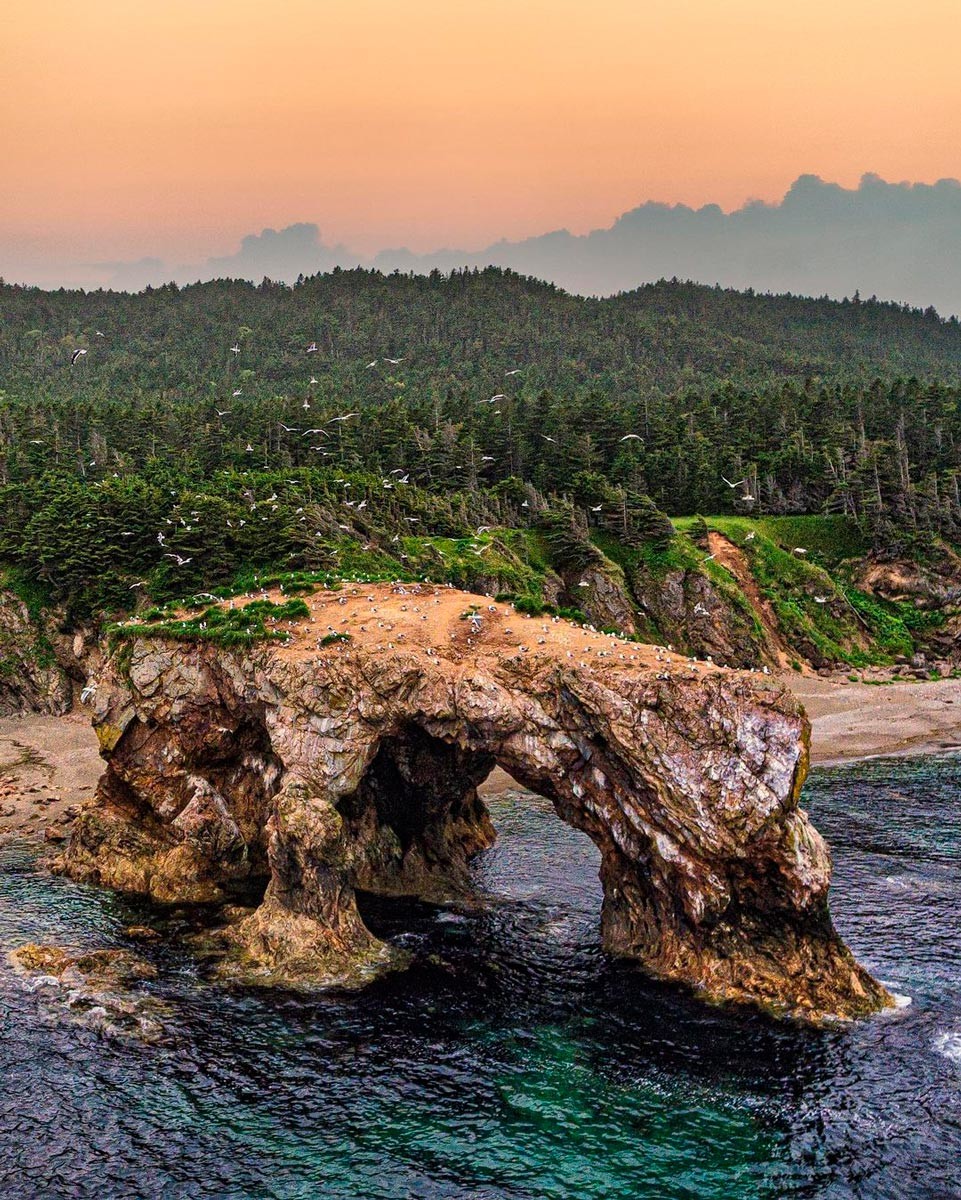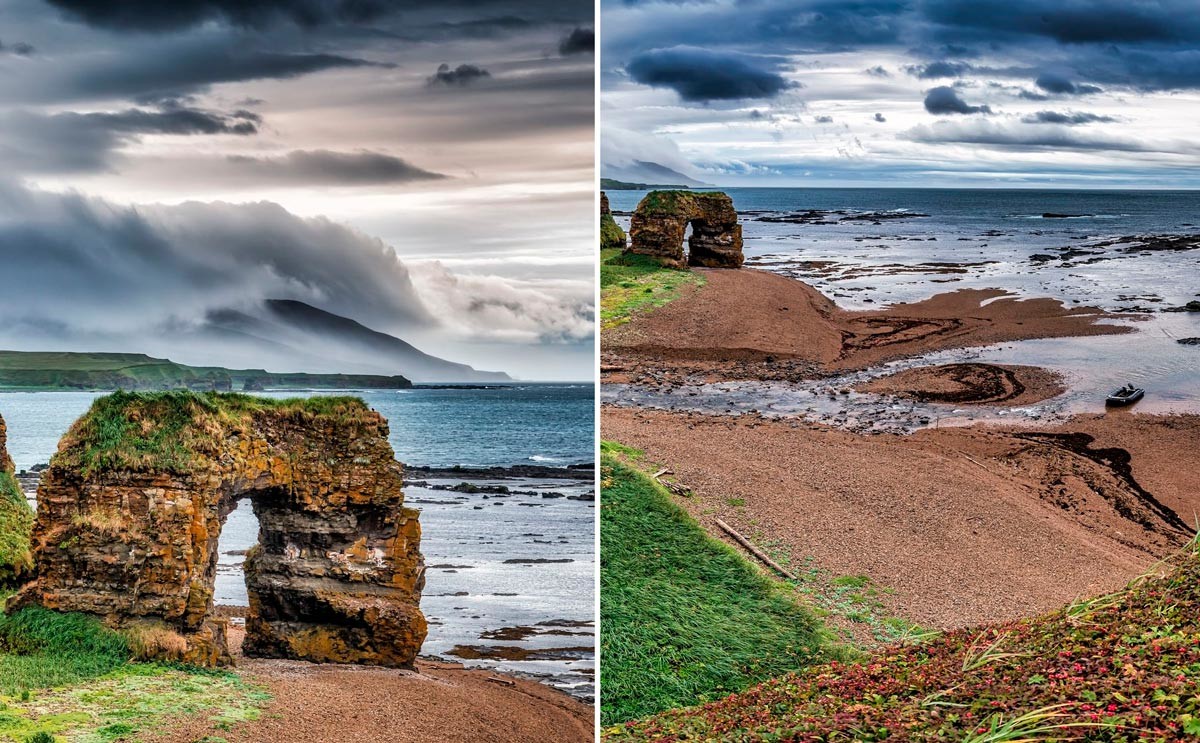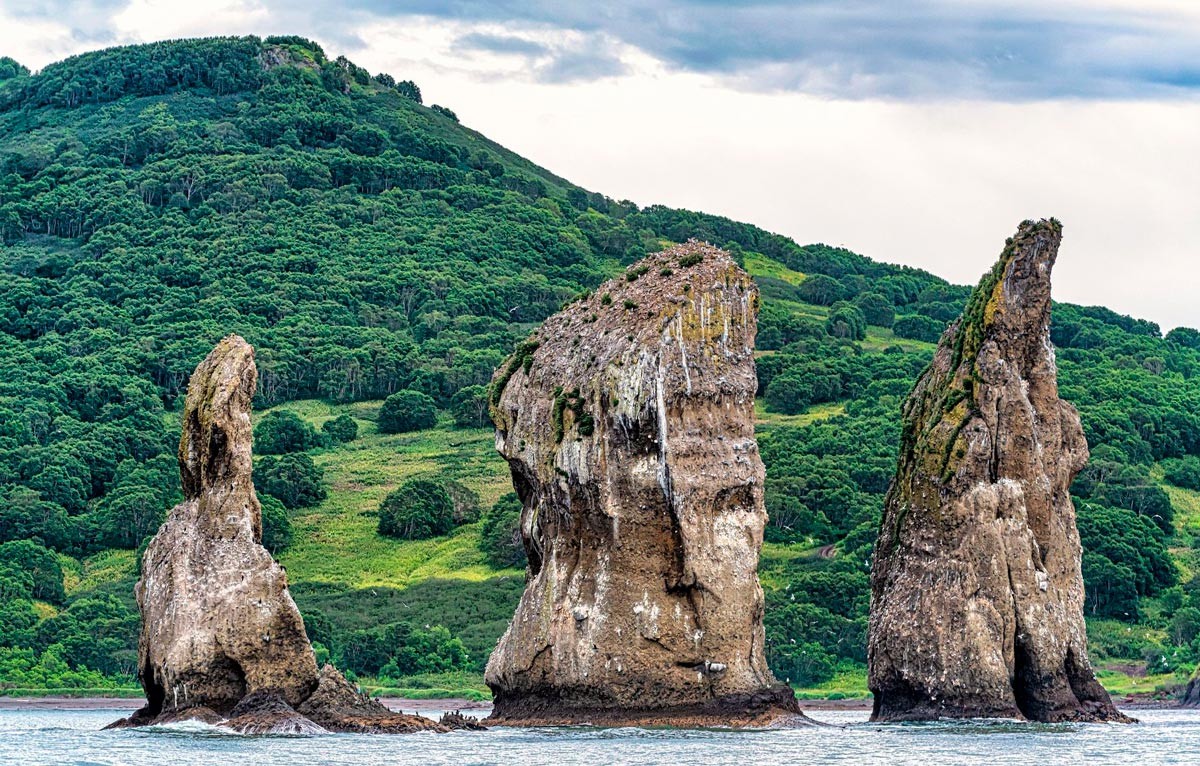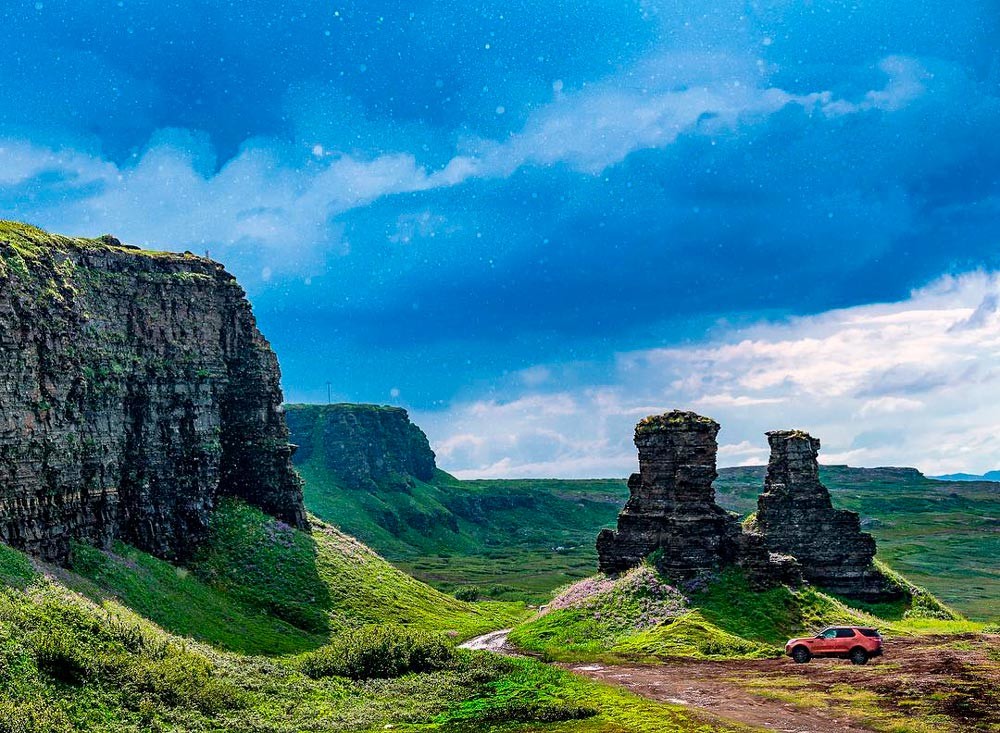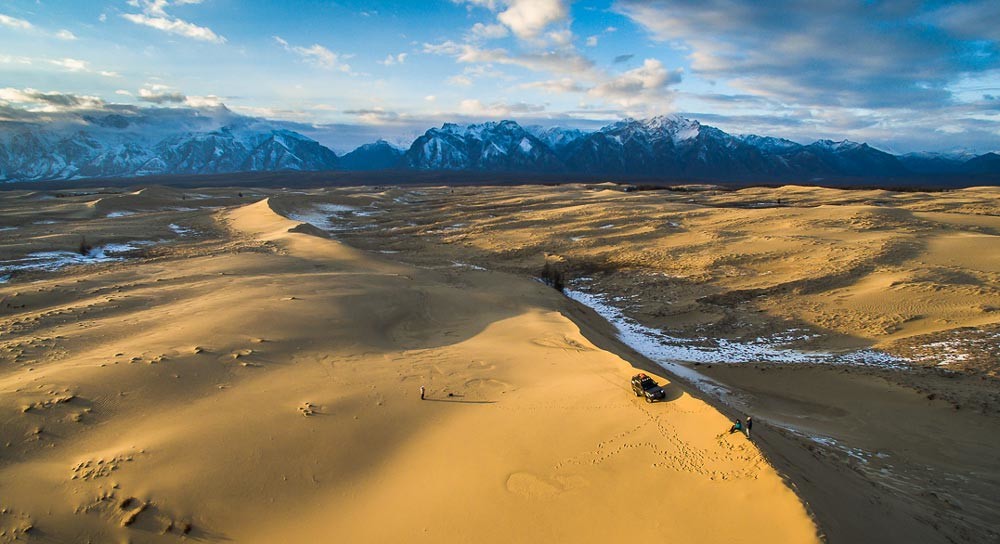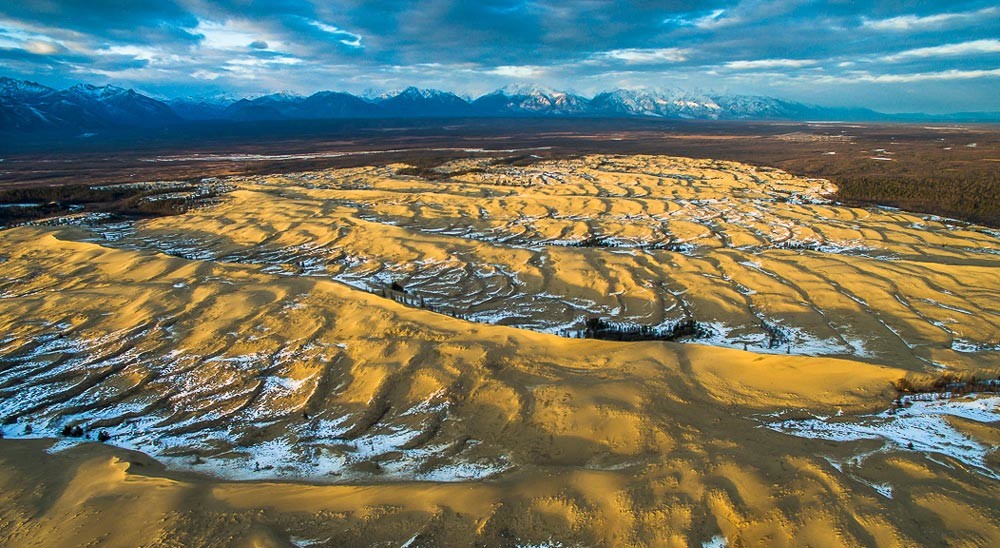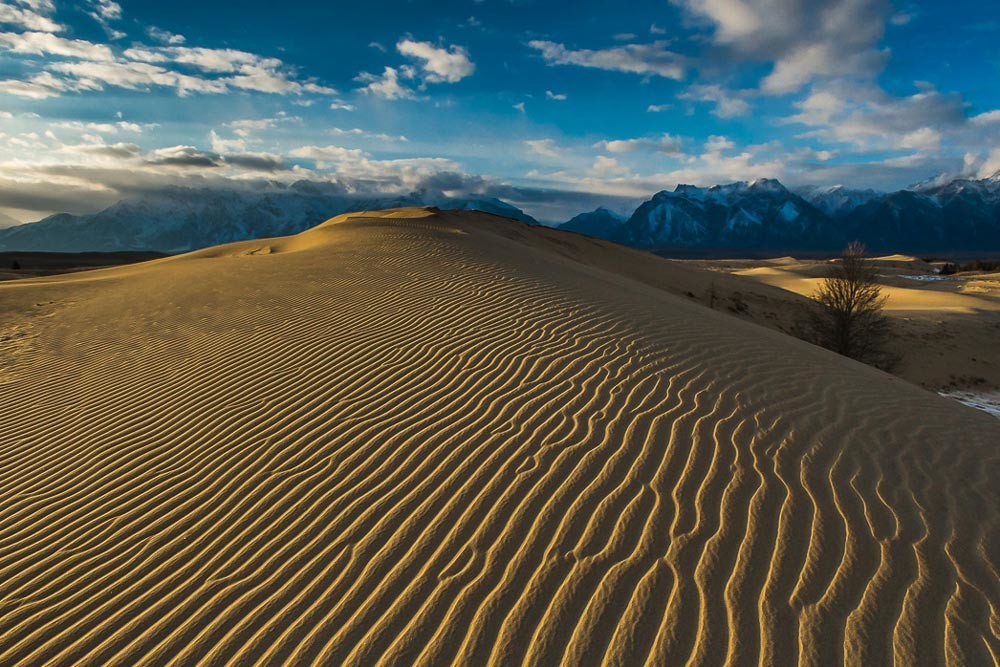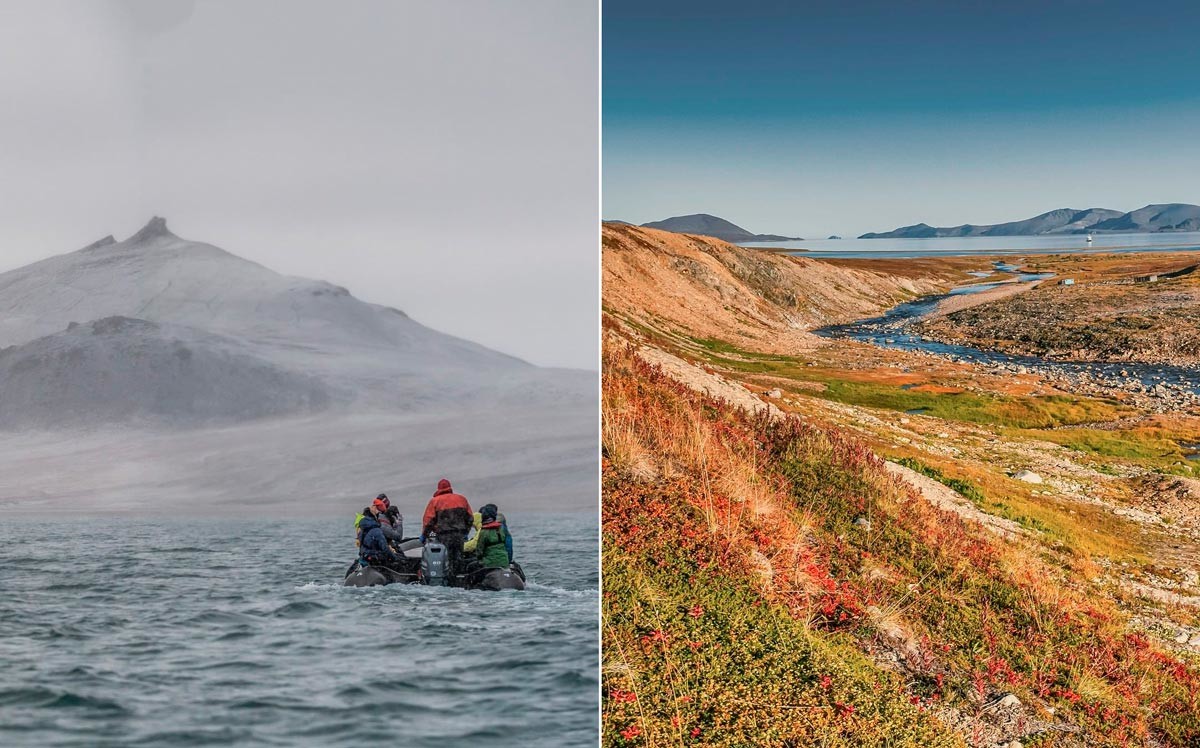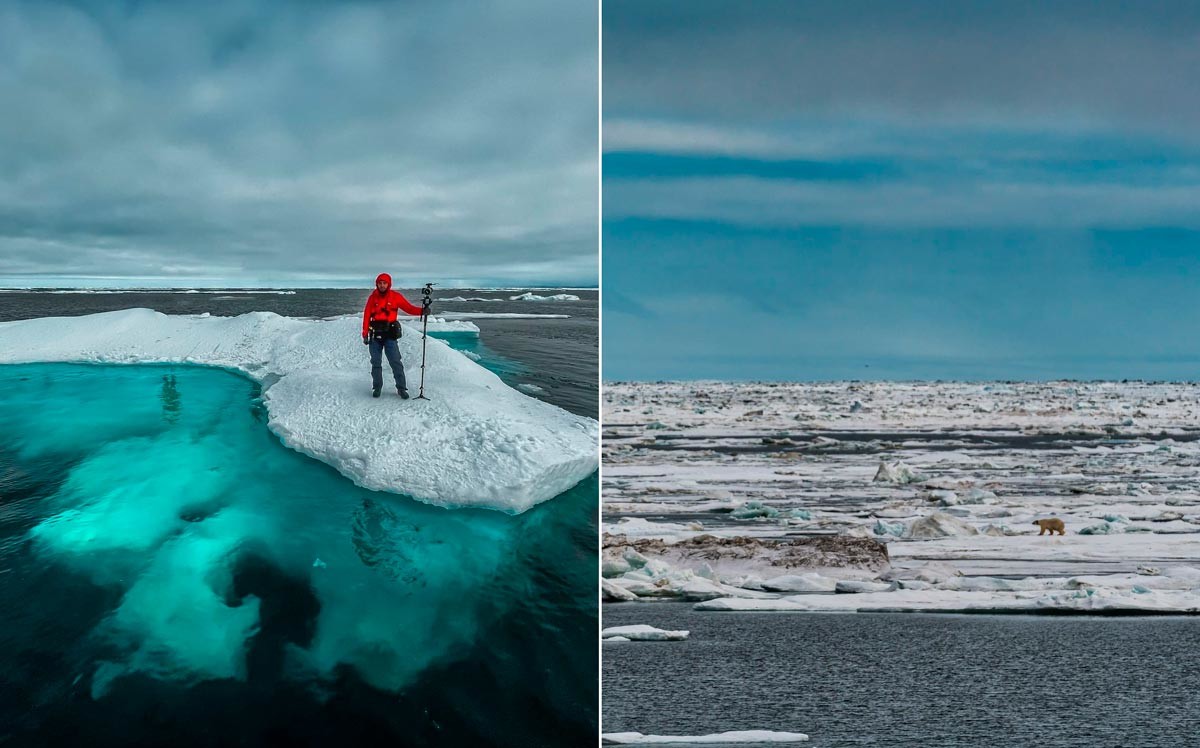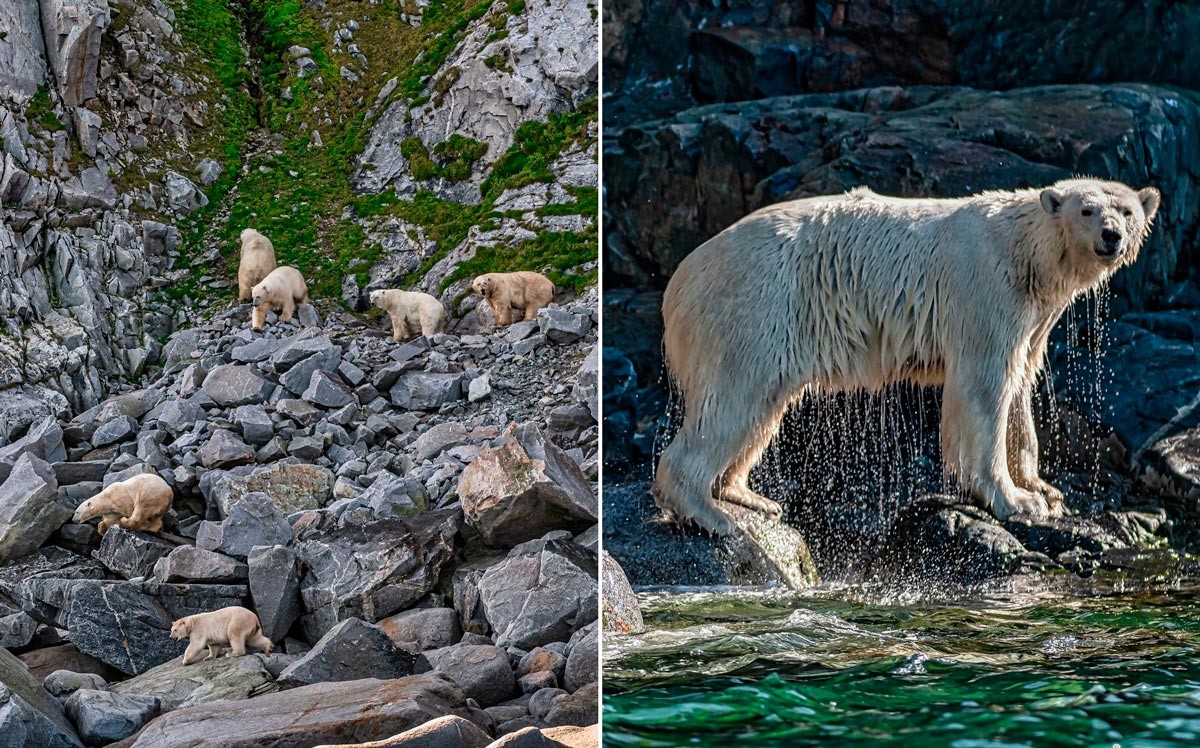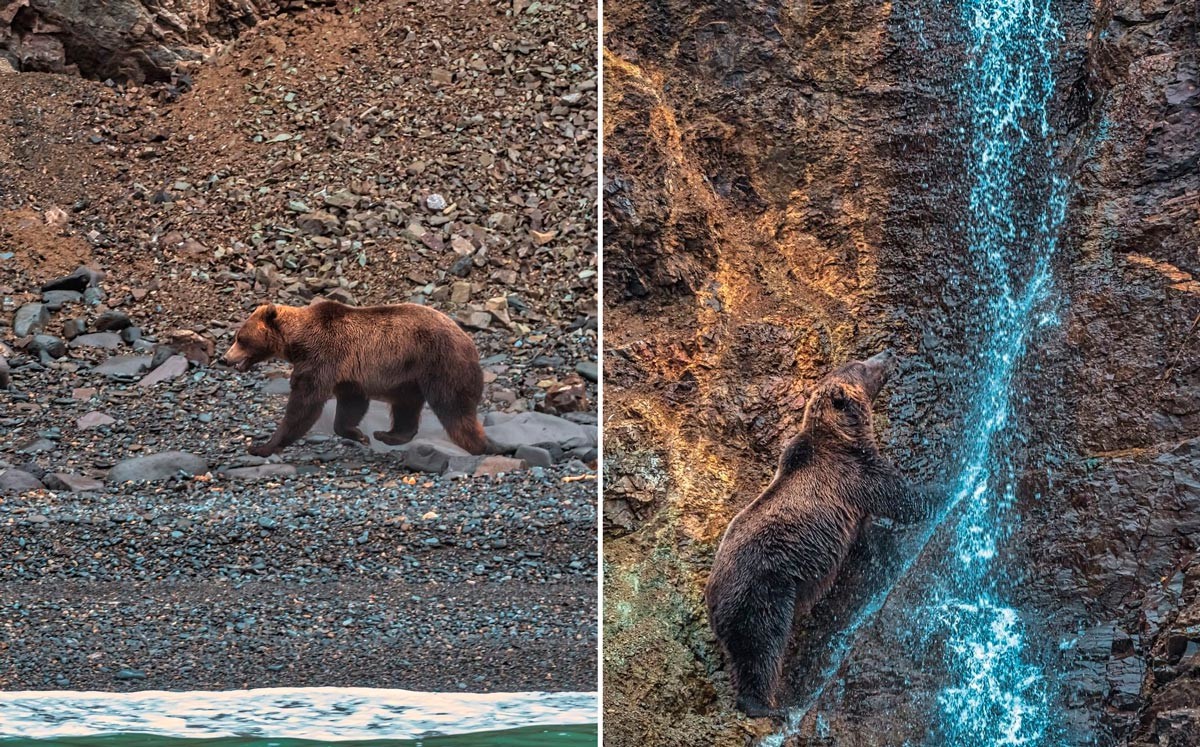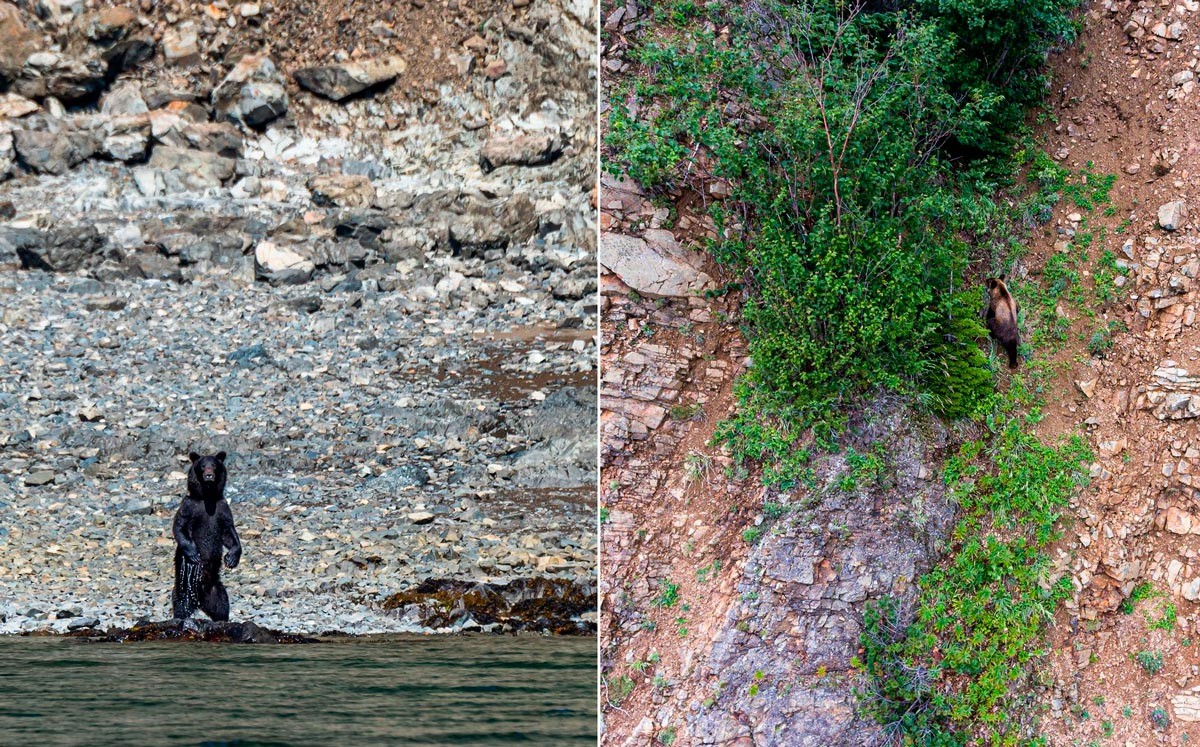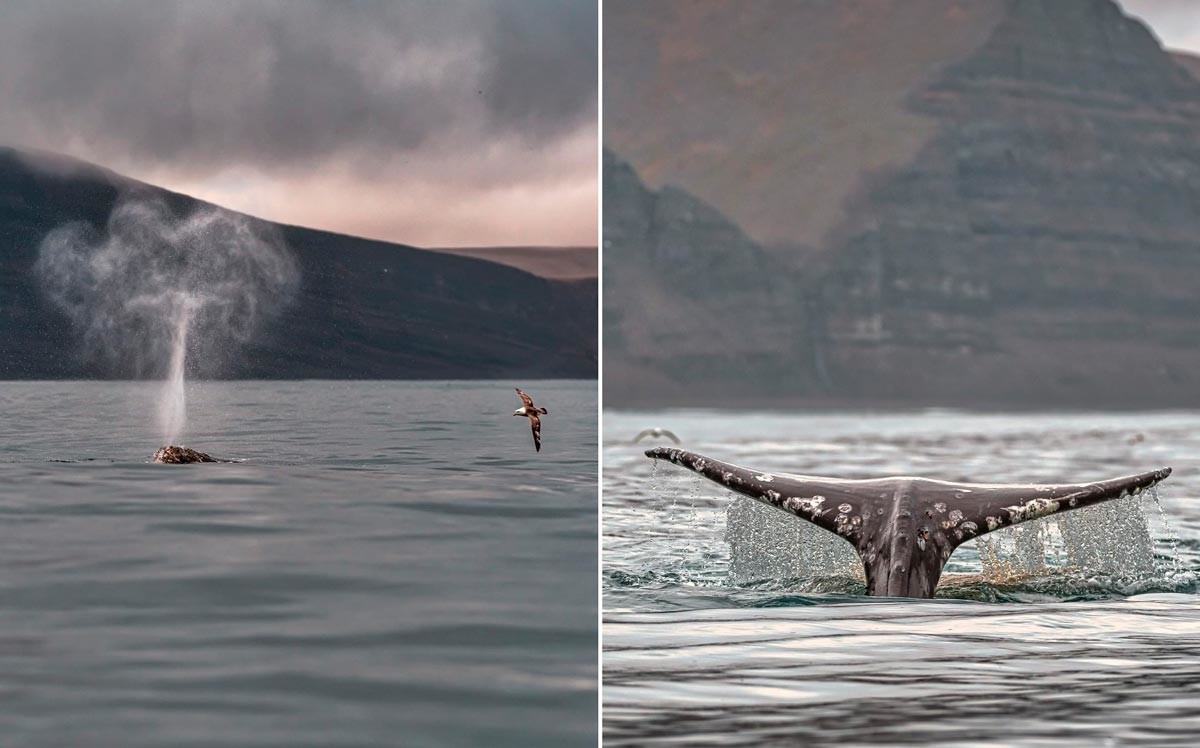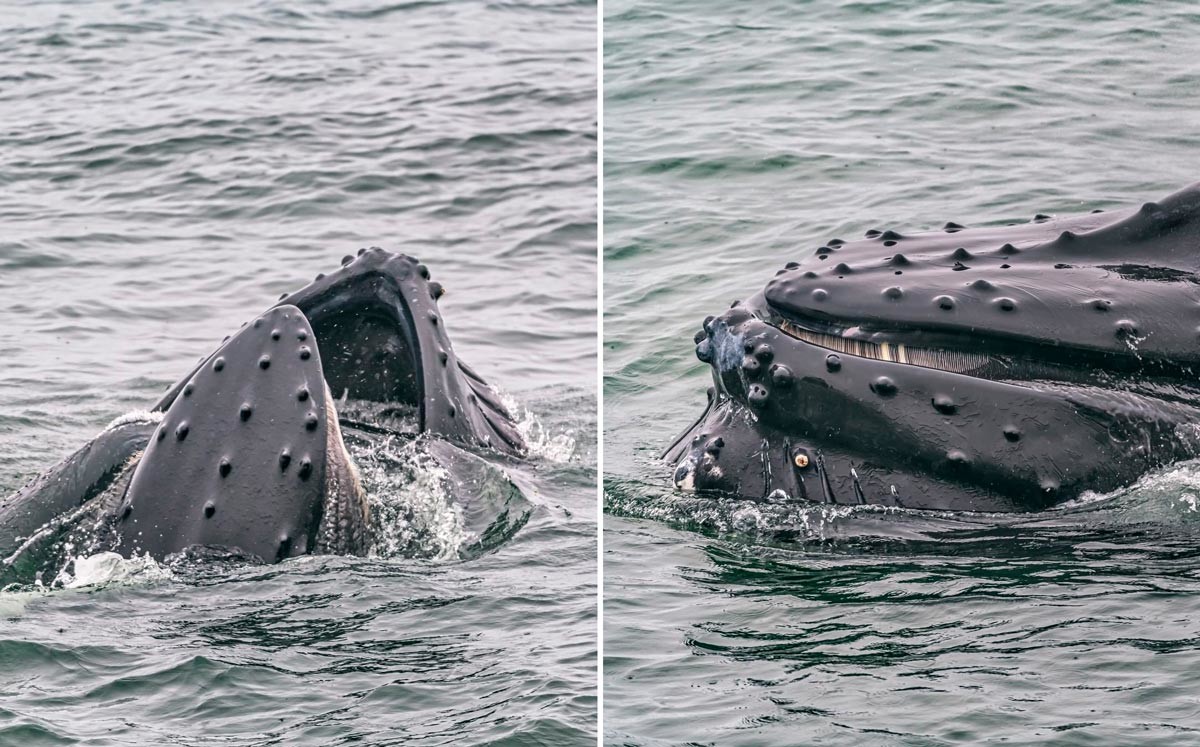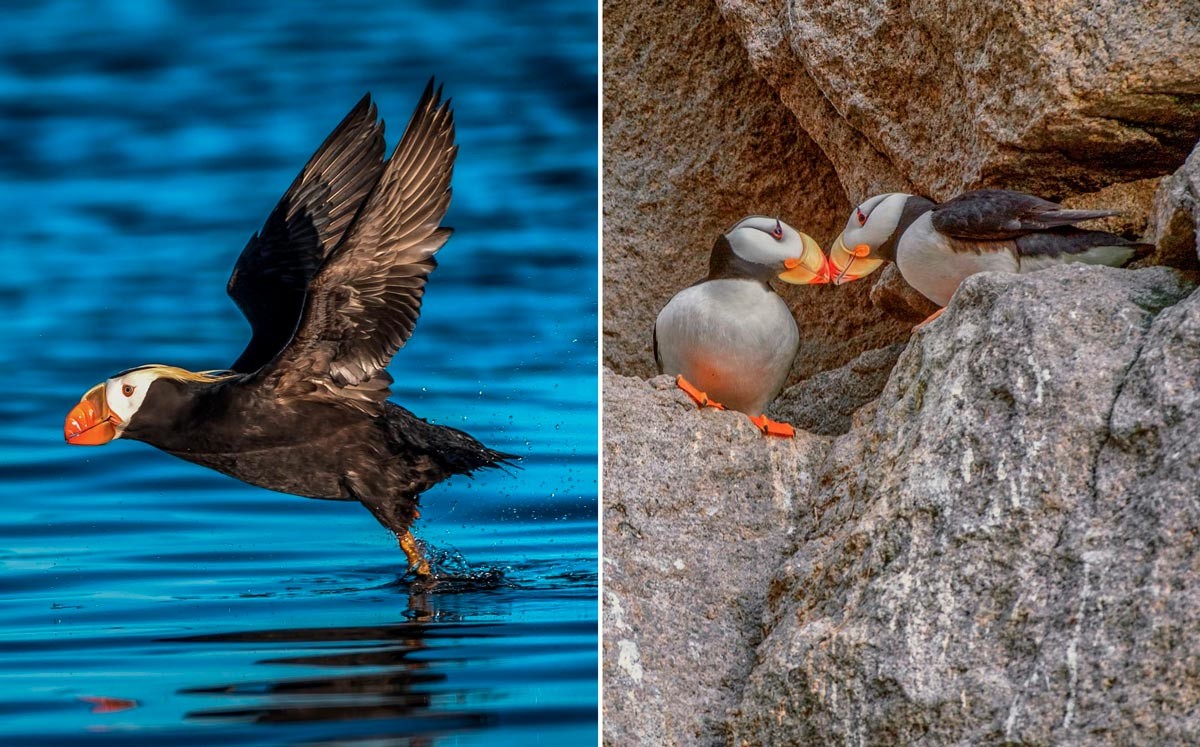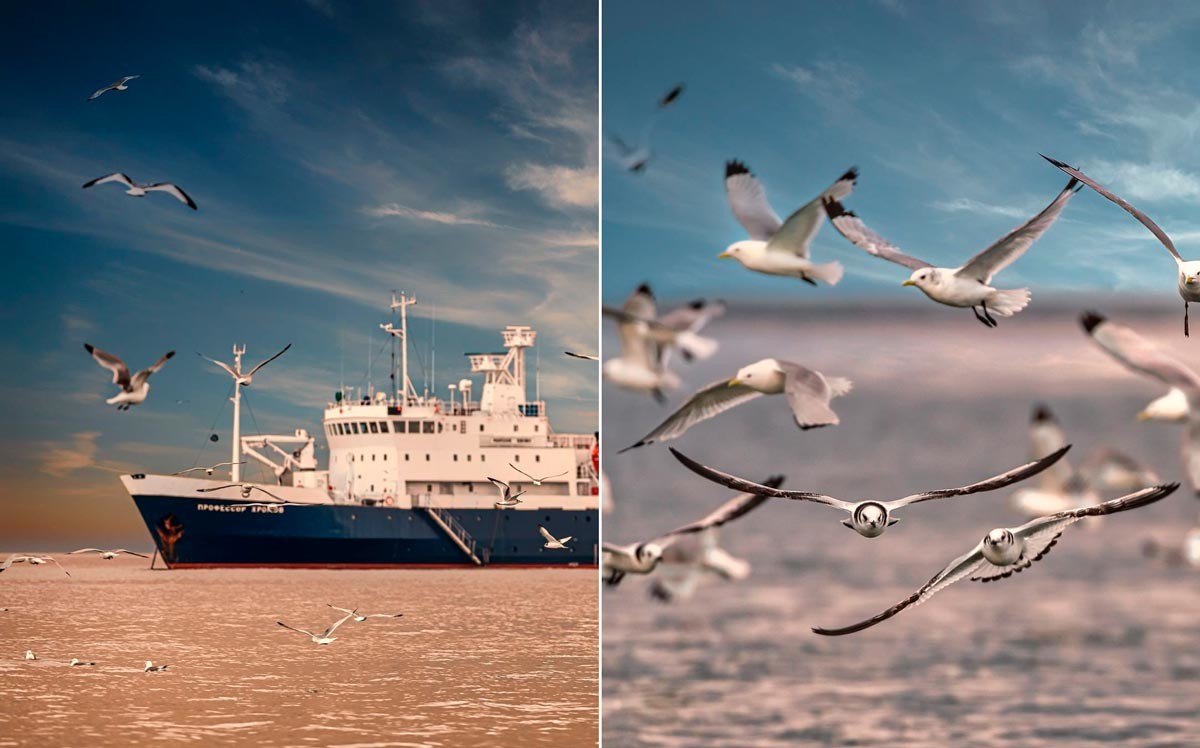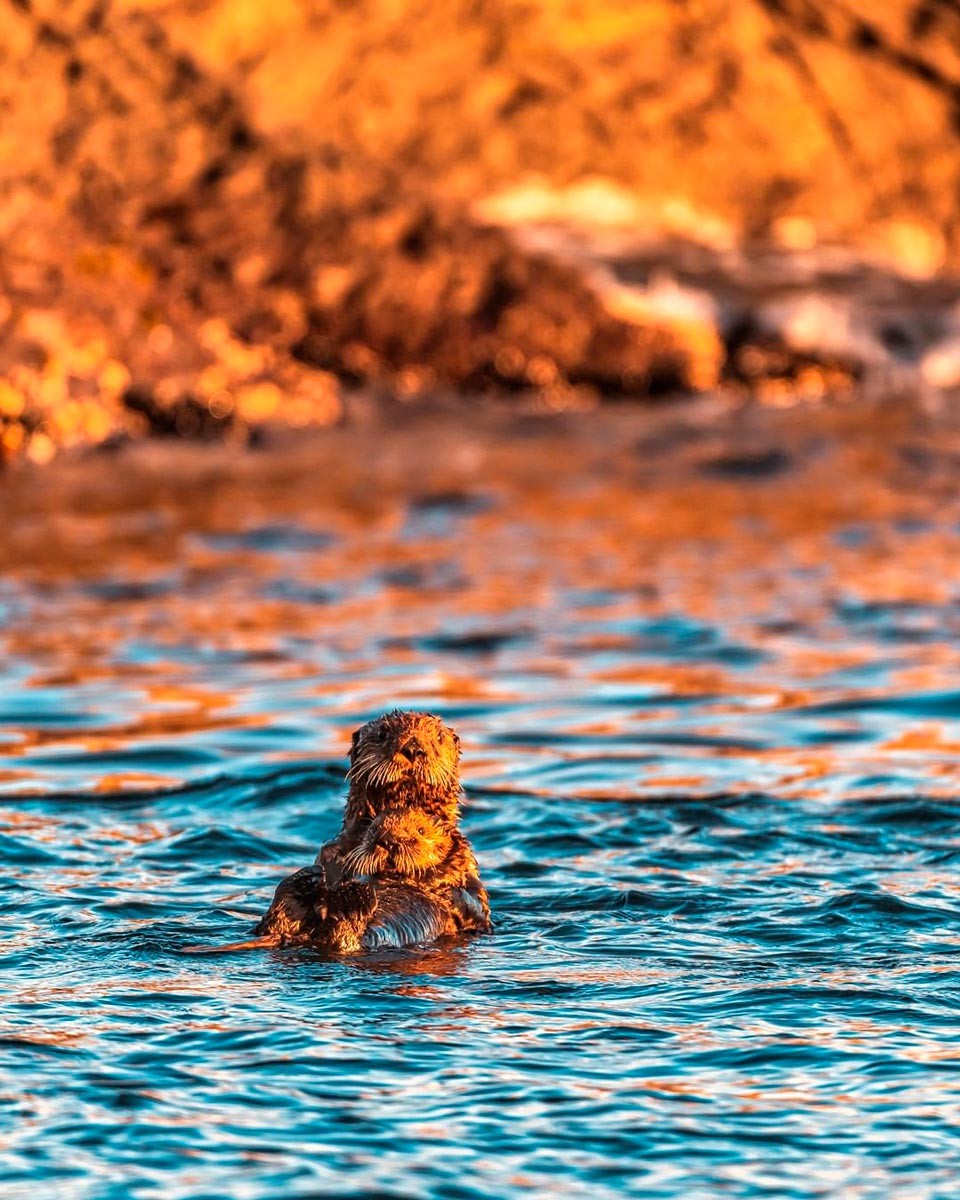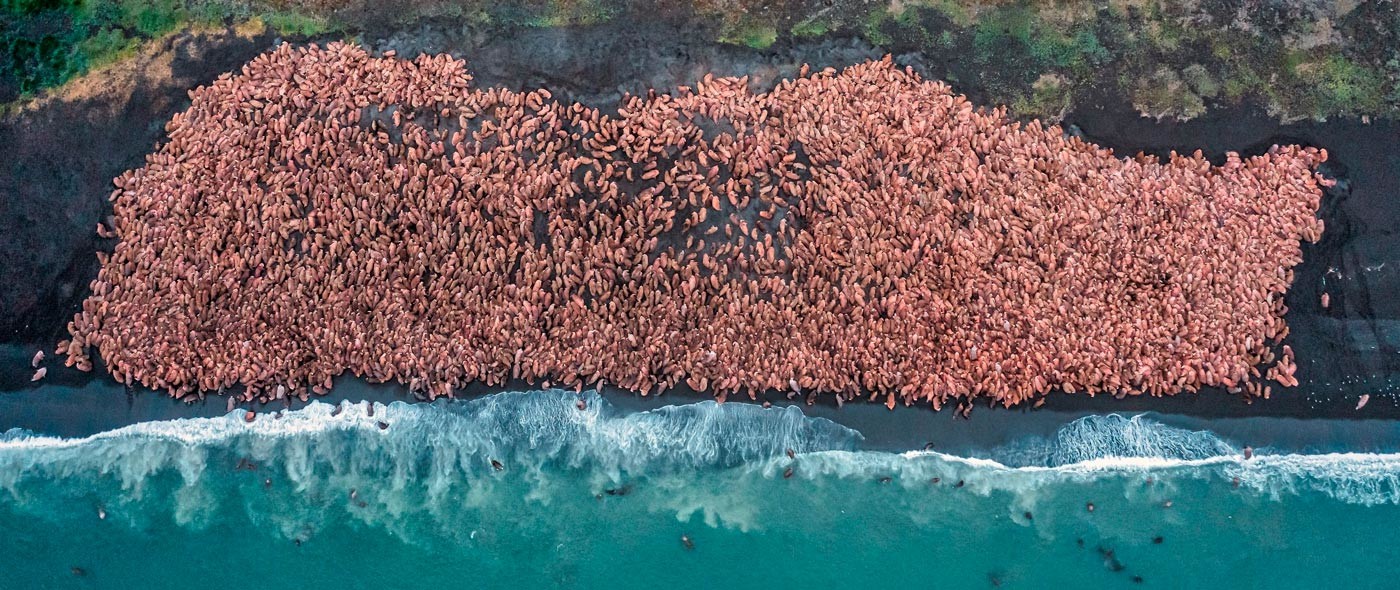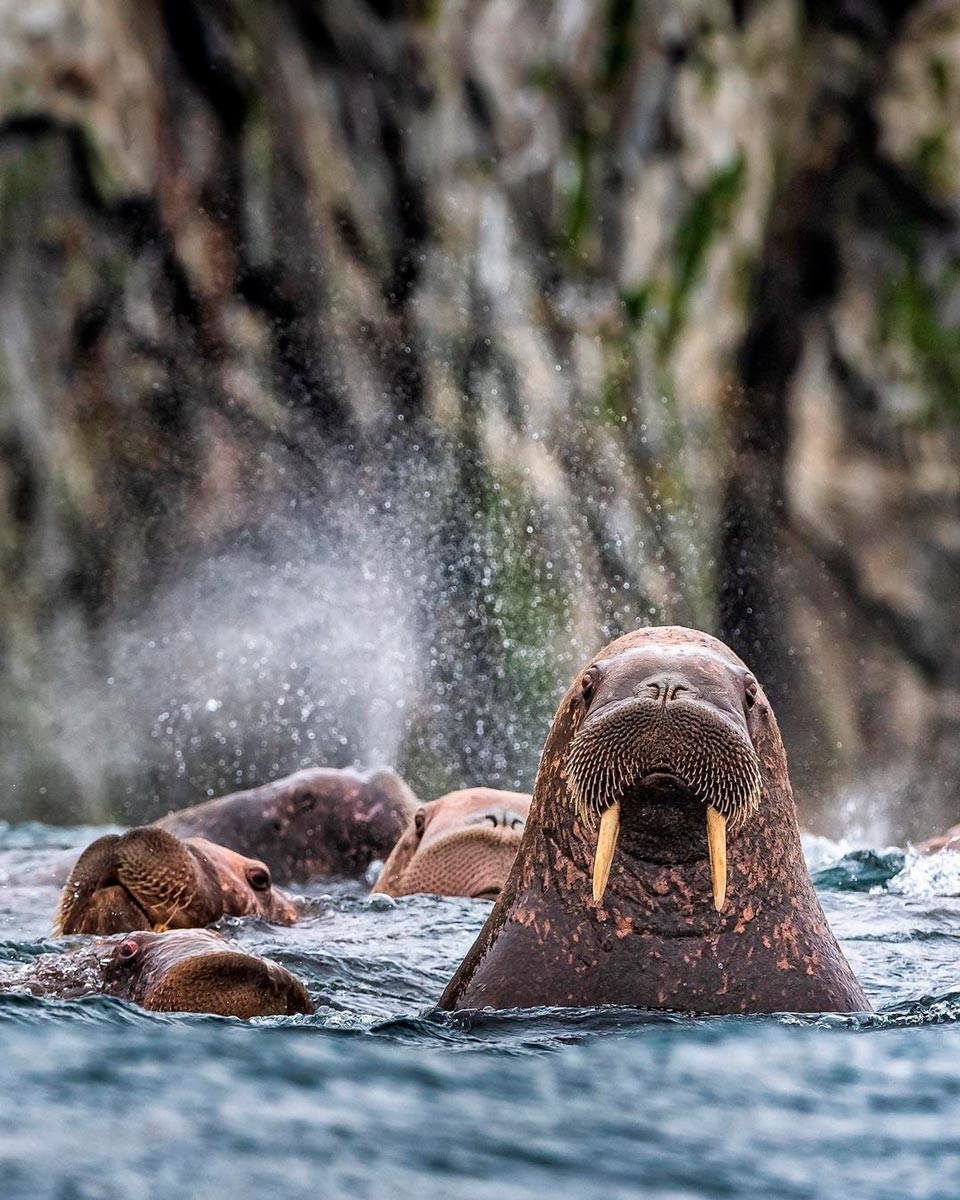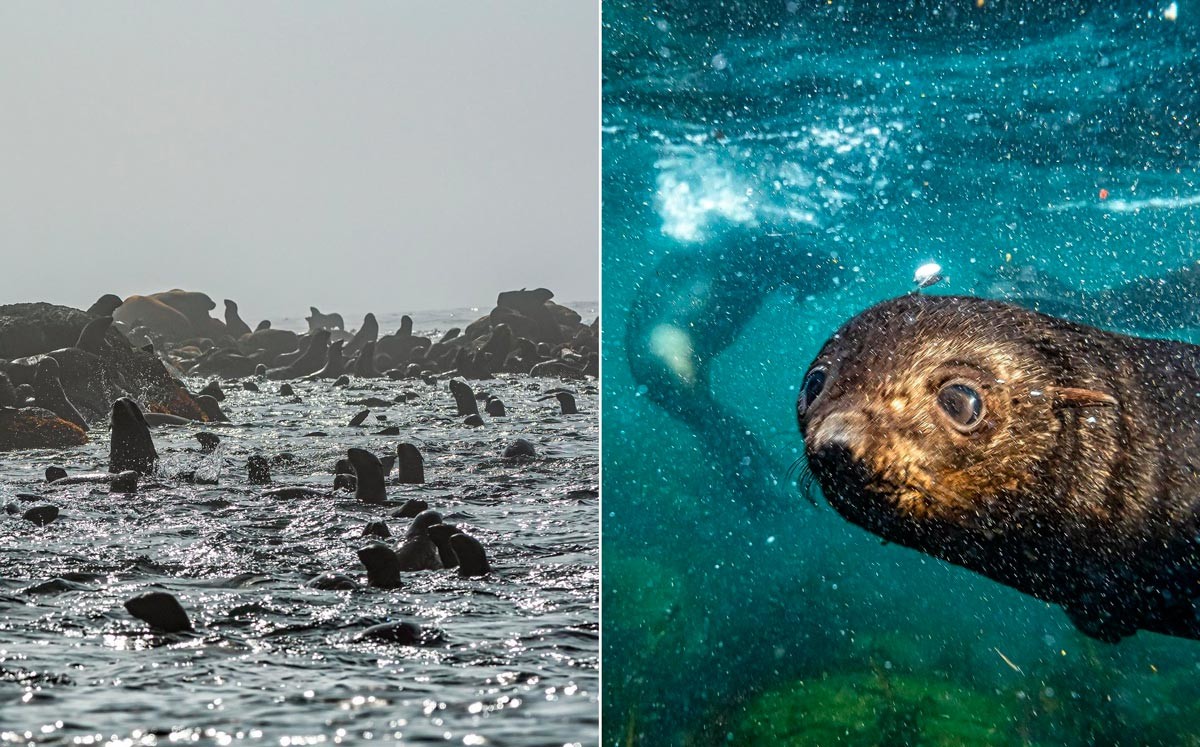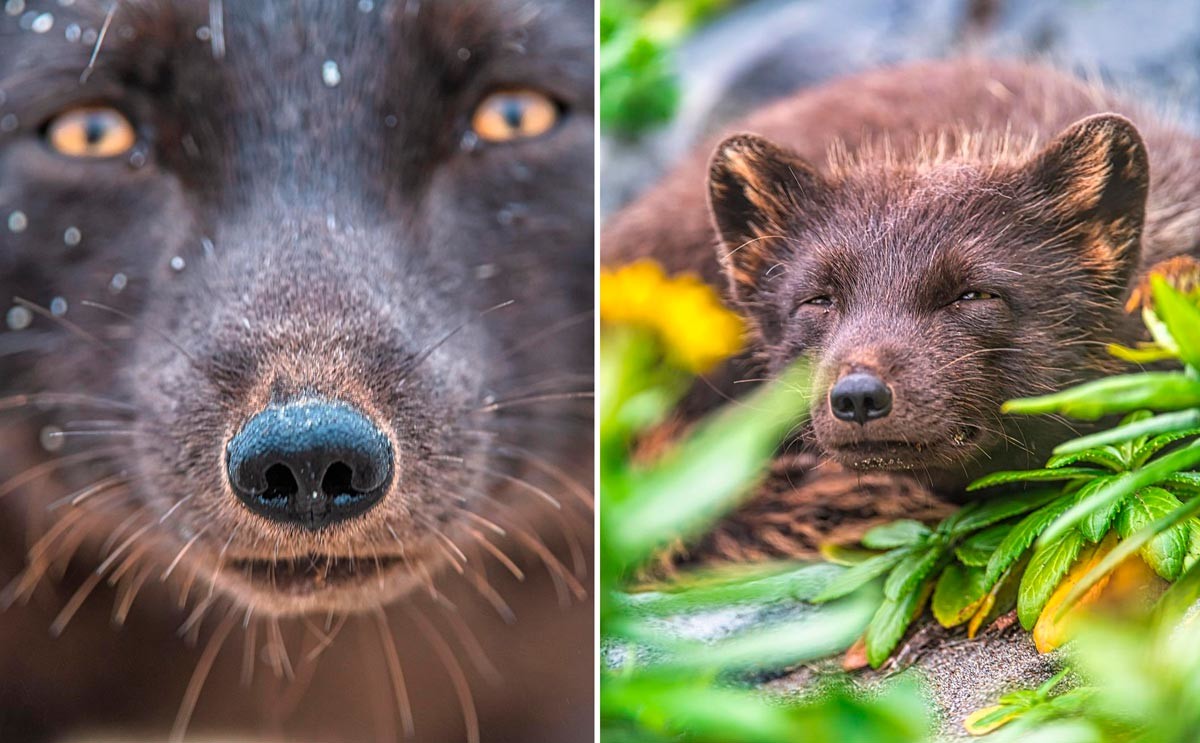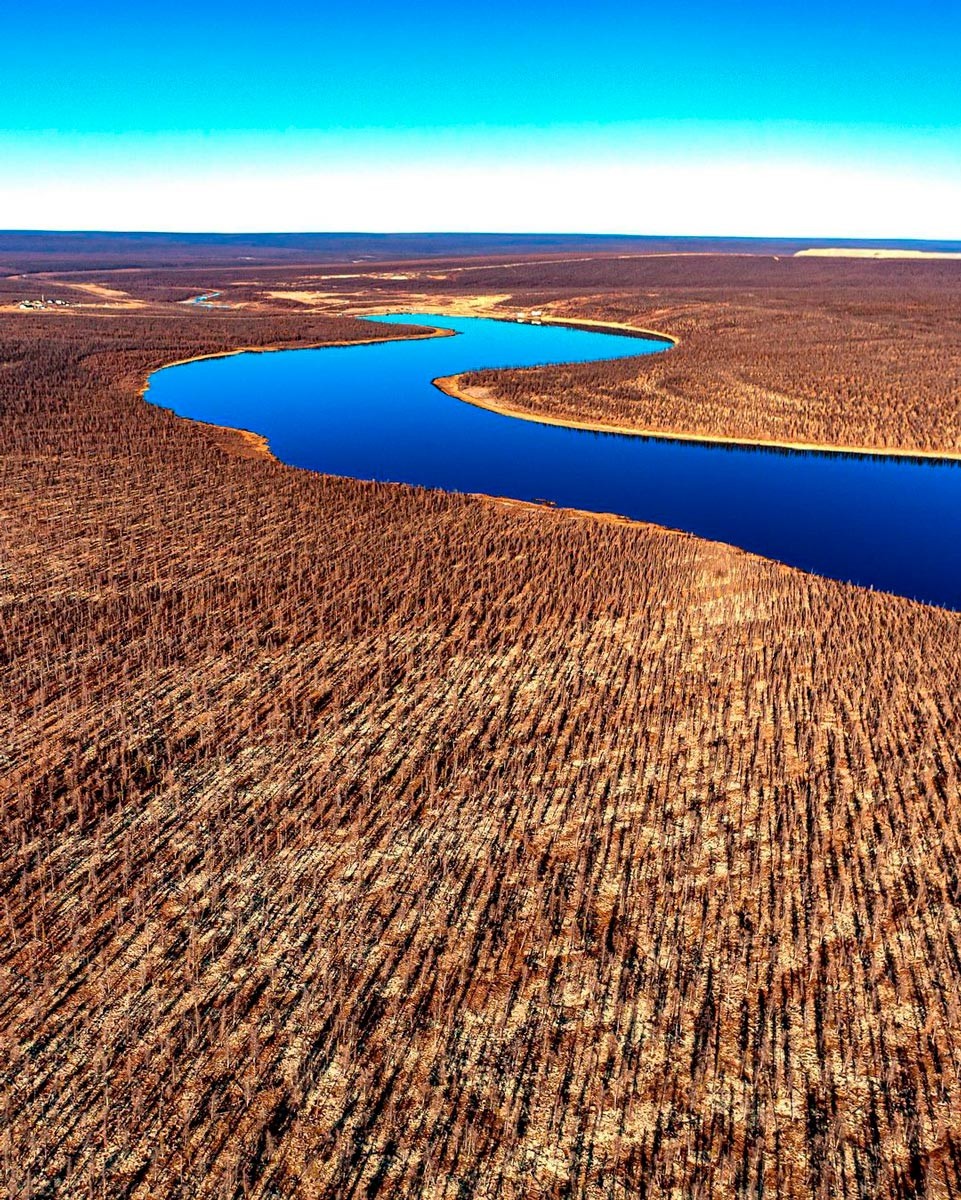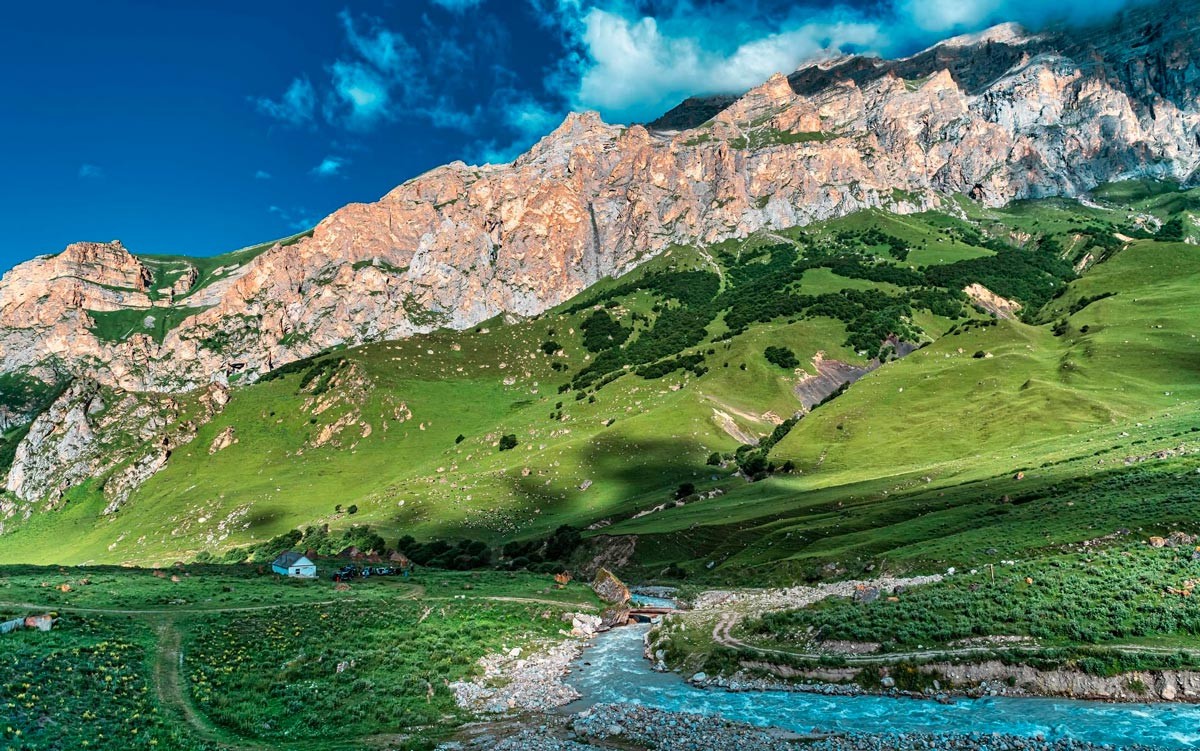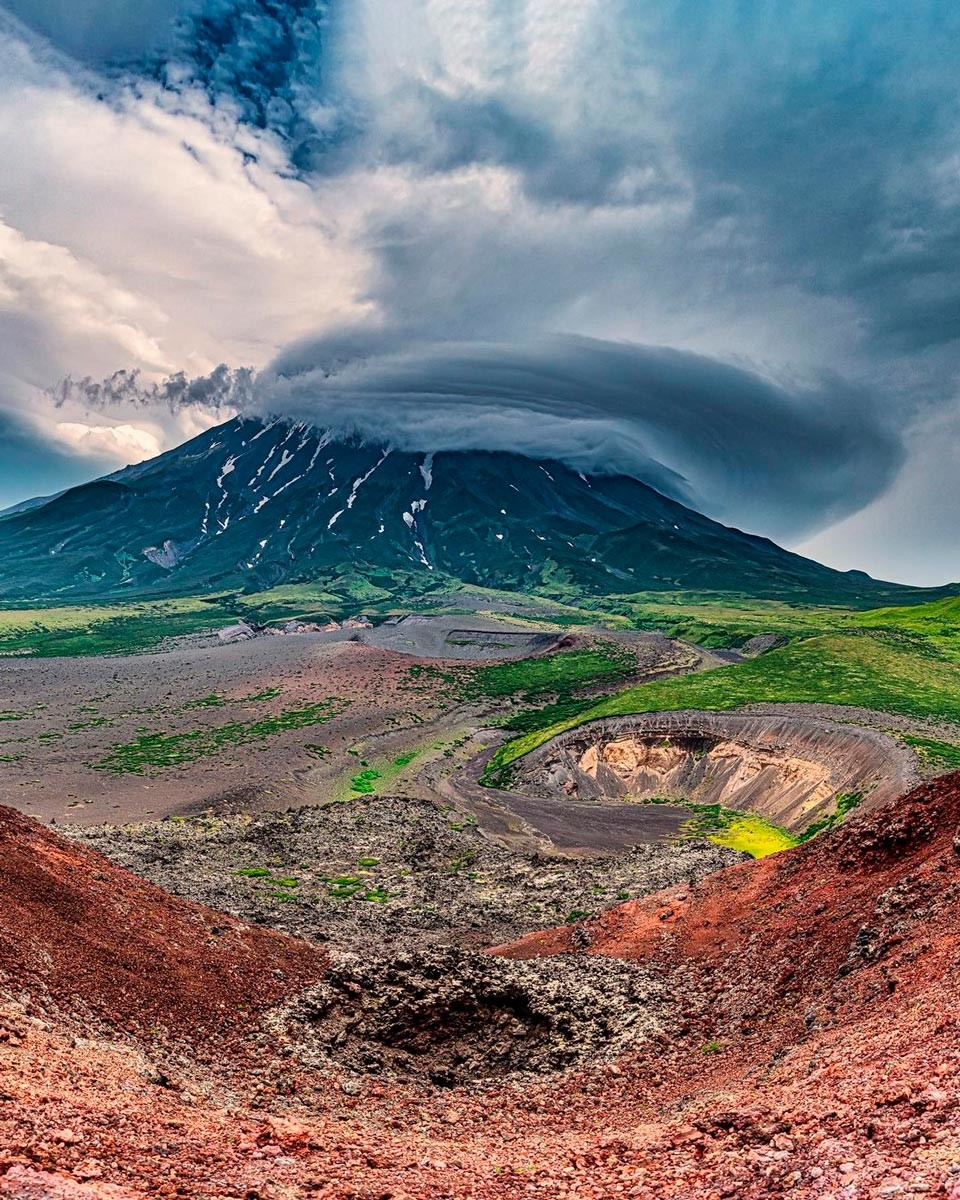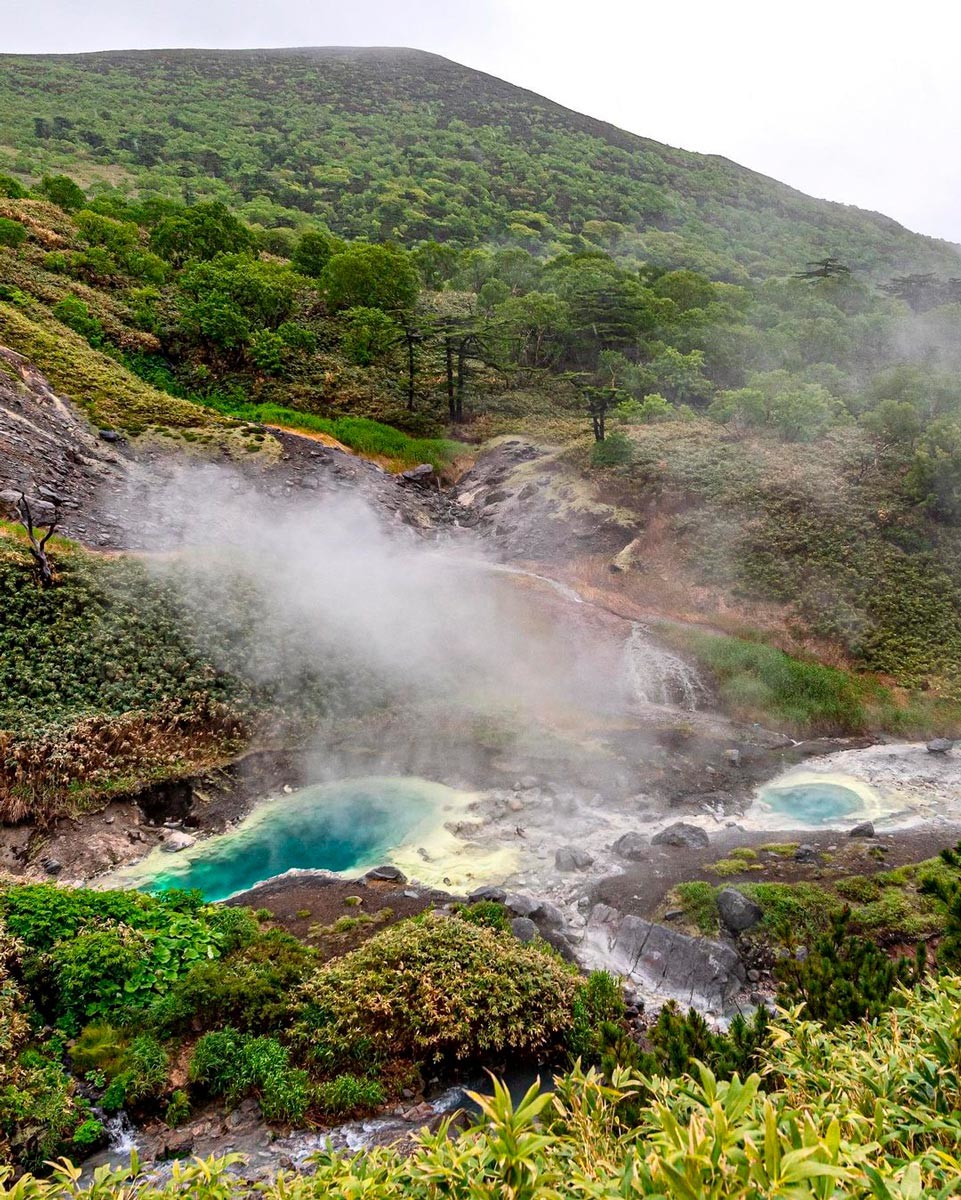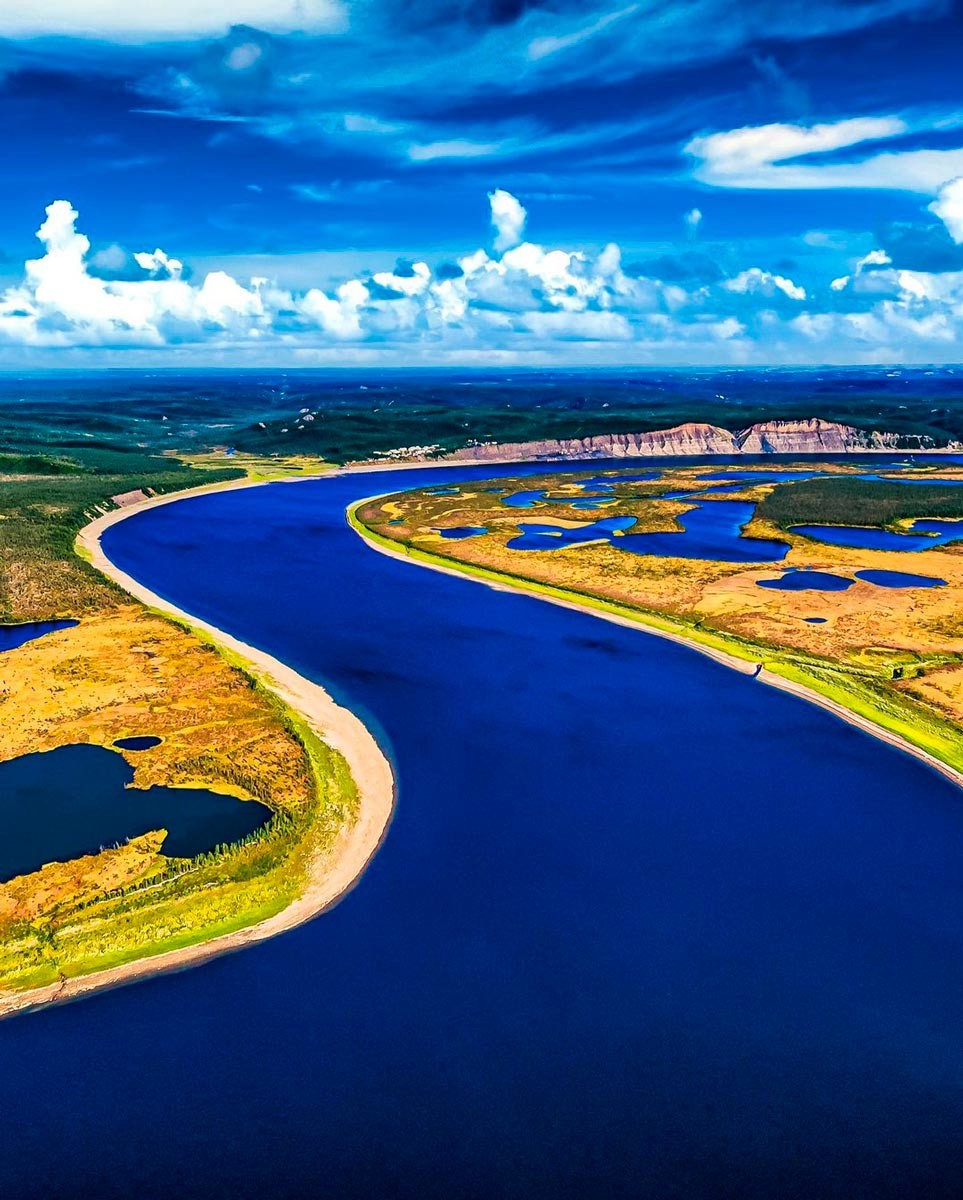Incredible PHOTOS of Russia’s most remote places

Successful businessman Sergey Dolya’s first travels were business trips. He enjoyed seeing Russia and the world so much that he structured his company to allow him to manage operations remotely. After that, he began to travel more and more, and became increasingly interested in photography and video making. Unsurprisingly, Dolya quickly became one of the most popular travel bloggers on the Runet.
In 2014, he made his longest and most difficult journey yet: the Rossiya (Russia) automobile expedition, which began in Astrakhan and ended in Vladivostok. The task was nothing if not ambitious: for two months the team “drew” the word “Rossiya” on a map of the country in their vehicles using GPS tracking. Since 2019, Dolya has also hosted his own TV travel show.
We asked traveler, photographer and TV presenter Sergey Dolya to name his favorite places in Russia. His Top 3 were: Manpupuner, the Chara Sands and Wrangel Island.
Let’s take them one at a time. Few Russians, let alone tourists, have heard of Manpupuner, perhaps due to its inaccessibility. This rock formation, located in the Komi Republic, is reachable by helicopter from Perm or Ukhta, or eight days on foot. Take your pick.
Sergey had long dreamed of visiting this place, but was able to get there only at the third attempt. The first two had to be abandoned due to fog and bad weather. The word "Manpupuner" itself means "small mountain of idols" in the local Mansi language. There was once a large mountain here, but, due to the effects of time and erosion, only seven towering pillars remain, each as high as a 14-storey building.
In Sergey’s opinion, it is Russia’s coolest natural attraction, comparable in scale to the Grand Canyon or the Great Barrier Reef.
Read more about Manpupuner here.
Incidentally, these are not the only residual mountains in Russia. Nor are they the only ones to be captured in Sergey Dolya’s lens. Chukotka, for example, is home to some similarly unusual rocks known as kekury. This word, most likely from the Nenets language, roughly translates as “elevation” and was used to designate the area.
And how do you like this “architectural solution” of Mother Nature – the arch of Cape Velikan on Sakhalin Island?
Stone sentries guard the bank of the Kotuikan river on the Anabar plateau of the Taymyr peninsula (Krasnoyarsk Territory).
And in Kamchatka there is a basalt butte called Steller’s Arch.
The “Three Brothers” rocks in Avacha Bay on Kamchatka is a true symbol of Petropavlovsk-Kamchatsky.
Two more “brothers” stand on the opposite side of Russia – on the Kola peninsula in Murmansk Region.
The second most incredible place in Russia, according to Sergey Dolya, is the Chara Sands. Not many people know about them either. They are the world’s northernmost and smallest desert, and are located in Trans-Baikal Territory.
The area is separated from civilization by a river and an insurmountable swamp, and is accessible only for a couple of weeks in spring or fall. The edge of the desert is encroached by coniferous forest, and from atop the sand dune a view of snow-capped rocks opens up. An incredible landscape.
Desert snow is not usually a common occurrence, but here it is. For Sergey, the sand dunes resemble the folds on a blanket. The dunes are quite high and “sharp,” and getting there by jeep is not easy.
Incidentally, the terrain can be crossed not only by vehicle, but on foot or by snowboard... Don’t believe it? Check out our video here.
Another of Sergey’s most memorable trips in Russia was to Wrangel Island to see the polar bears: “It’s been five years since I visited the teddies, but I still remember them.”
The Arctic offers an unusual attraction – riding an ice floe. Walruses or polar bears can often be seen on them. “People often get a bigger kick out of riding an ice floe than from encountering whales or said walruses and polar bears,” Sergey writes on Instagram. “It’s one thing to observe it, but another to realize you’re in the middle of the ocean on a small piece of ice, all alone.”
Sergey also observed polar bears in Chukotka, and tells his readers interesting facts about these magnificent animals. “Polar bears are, in fact, black. Their skin is black to better absorb heat on sunny days,” writes Sergey. “Their coat is not white, but transparent. Each villi [hair] is like a small cocktail straw. It only looks white, but with age can turn yellow or even green if clogged up with algae.”
Sergey also observed brown bears in Kamchatka. The peninsula is generally considered bear country. Contrary to many travelers’ expectations of bears aplenty, sometimes it’s not so easy to see them.
Sergey recounts how one bear was scared of him, not the other way round. “He obviously saw us before we saw him, and just ran away. Several times he tried to climb up the vertical cliff to get away from the sea, but to no avail,” says Dolya. Having spent a few minutes taking photos from long range, Sergey and the group left so as not to bother the bear anymore.
And on the Shantar Islands Sergey accidentally stumbled on a bear in the forest... An unexpected and rather frightening experience. He had no whistle or weapon to hand. But nothing happened, the bear simply ran back into the forest.
On his travels, Sergey has observed all kinds of wild animals. Whales in Chukotka, for instance, both gray and humpback.
On Wrangel Island, he managed to photograph a humpback whale feeding.
He also encountered horned and tufted puffins, two unusual members of the puffin family.
On the Commander Islands in the Pacific Ocean, hordes of seagulls accompanied the cruise ship.
The Commander Islands are also a habitat for sea otters, which have luxurious fur.
And on the Chukotka coast Sergey accidentally came across the largest walrus rookery he had ever seen.
Walruses live in large herds. “While the herd lies and sleeps, there are always several ‘sentries’ on guard who monitor the surroundings. When a predator approaches, say, a polar bear, killer whale or human being, the sentries start bellowing,” writes Sergey. Incidentally, Pacific walruses are larger than Atlantic ones. And what exactly they need tusks for, biologists cannot say. “Once I saw a walrus sink its fangs into an ice floe so as not to be blown off by the strong wind or washed away by the waves,” Dolya posts.
On the Kuril Islands, he encountered another herd, this time of curious fur seals.
And a handsome Arctic fox.
“What country is the most beautiful? Russia, of course! And I say that not as a patriot, but as someone who has seen most of our planet,” writes Sergey. “Traveling in Russia is not always easy, but if you do manage to get off the beaten track, you’ll be immensely rewarded by what you see.”
And now, without further comment, a few more incredible shots of Russia’s natural beauty by Sergey Dolya.
Kamchatka
Yakutia
Elbrus region
Ushishir volcano
Iturup Island in the Kurils
Putorana plateau
If using any of Russia Beyond's content, partly or in full, always provide an active hyperlink to the original material.
Subscribe
to our newsletter!
Get the week's best stories straight to your inbox
